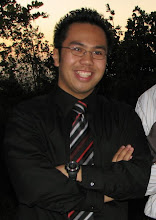 Above: Nothing beats a tall set of golden arches to greet you on the road. Gilman McDonald's, Exit 283, on Interstate 57 in Illinois.
Above: Nothing beats a tall set of golden arches to greet you on the road. Gilman McDonald's, Exit 283, on Interstate 57 in Illinois."I ROAMED THE COUNTRY
SEARCHING FOR ANSWERS TO THINGS
I DID NOT UNDERSTAND."
- Leonardo da Vinci
4:40 PM, Sunday - My friend Don and I were driving back on good old Illinois Interstate 72, after visiting an elective site I'll be attending this upcoming January. I-72 is a four-lane corridor originally designed to connect the mid-sized cities of Springfield, Decatur, and Champaign, Illinois. We got to talking about places that seemed so "perfect," that they were "too good to be true." And for some odd reason, that got me on a mantra to talk about what I liked about Champaign, a city I spent a good 4 years of my life in. To me, it was an example of perfection, but there seemed to be no strings attached to that experience.
----
The debate is still hot. Even though it has been just over a year since I've written anything on this topic, it's still something I do think about. I'm still attracted to the sense of urban sophistication that's given in the larger cities like Chicago, but something also pulls me towards the growth and potential in smaller cities found away from metropolitan areas.
I drove down to Champaign this past weekend to spend some time with my good friends Neal & Christine, who I've always wanted to spend time with (more than the 13 hour stop I made last time I was in town in May). On a cold Saturday morning, I whipped down I-57 and made it from the Chicago Area in a very efficient 2.5 hours (without speeding, and with a McDonald's stop for coffee placed in there). When I got into town, seeing a good chunk of people outside at 8:30 AM doing their morning jog on streets made me smile. It was good to see at a metropolitan area of about 100,000+ people (without the students at the University of Illinois) still had that sense of freedom that comes with safety. I soon found myself in the outer rim of the city, entering the "suburb" of Savoy where Neal & Christine live. I smiled when I noticed that when I looked to my left, I saw houses, but on my right, I saw the beauty of endless fields of corn blowing in the wind.
With a lot of smaller cities, especially those home to colleges, there is an investment into downtown areas, to infuse culture, improve the quality of life and to show that these cities have identity. The Champaign-Urbana area has exactly been doing that, and every time I come back, there's something new or something improved about the area. When I first visited the U of I in 2002, I saw the potential in the area, as this was when the improvements were beginning in the cities. And 8 years later, I can see there's something for everyone, with everything from a Weekend Farmer's Market in Urbana to fancy eating in the downtown area of Champaign to summer festivals that complement any social outing quite well.
No, this isn't a post to simply limit my future to be here in Illinois (although I would love to be), but an example of a place I would love to live. I look at other large college towns, like those in Bloomington, IN, Madison, WI, and somehow that "oasis" of urban-ness within miles of rural terrain pulls me to places like those too. From a professional standpoint, the mix of people coming from a city-life and from the rural areas to receive health services makes this an attractive patient base to work with in my future. For me, there's always something about a city that is with vibrant growth that will entice me to live there.
So, although I got some R&R by hanging out with my friends in Champaign, I also got to learn a little more about what I wanted too. And that's what made this past weekend quite awesome.



